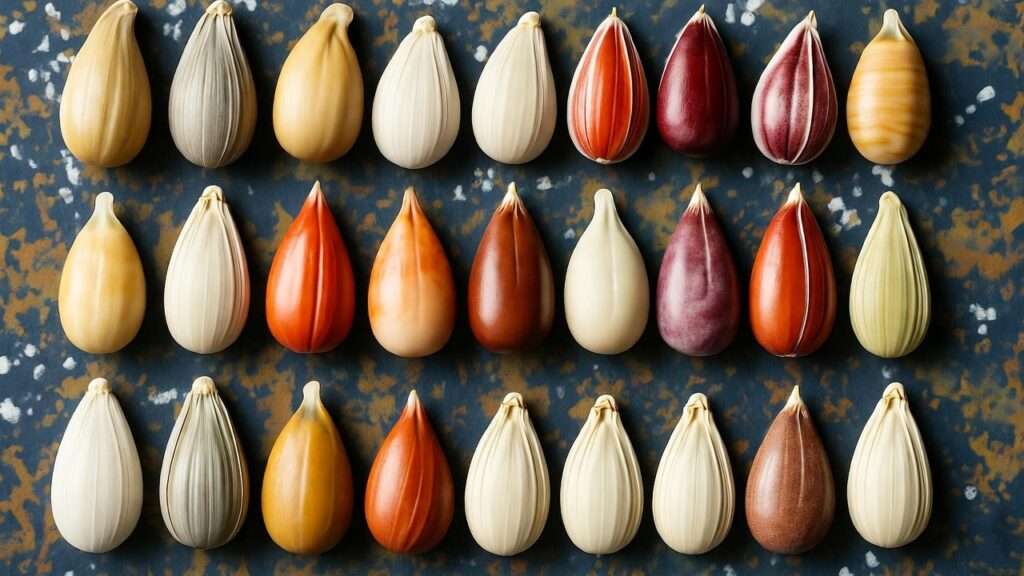Picture this: you’re standing in your garden, biting into a tender, sweet ear of corn you grew yourself, bursting with flavor that only homegrown produce can deliver. 🌱 The secret to this moment lies in choosing the best corn seeds for planting—a decision that can make or break your harvest. Whether you’re a beginner gardener or a seasoned grower, selecting the right corn seeds is the foundation of a thriving crop. In this comprehensive guide, crafted by a horticulture expert with over a decade of experience in sustainable gardening, you’ll discover everything you need to know about corn seed varieties, from sweet to heirloom, and how to match them to your climate, soil, and goals. Expect practical tips, expert insights, and a curated list of top-performing seeds to ensure your corn garden flourishes in 2025. Let’s dig in! 🌾
Why Choosing the Right Corn Seeds Matters 🌾
Selecting the perfect corn seeds for planting isn’t just about tossing seeds into the soil—it’s about setting the stage for a bountiful, flavorful harvest. The variety you choose directly impacts yield, taste, and resilience against pests and diseases. For example, sweet corn varieties like ‘Honey Select’ are prized for their juicy kernels, ideal for summer barbecues, while dent corn varieties like ‘Reid’s Yellow Dent’ are better suited for cornmeal or livestock feed. Choosing seeds that align with your gardening goals ensures you get the results you want, whether it’s a plate of buttery corn on the cob or a colorful display of heirloom varieties.
Impact on Yield and Quality
The right corn seed can mean the difference between a sparse crop and a bumper harvest. Hybrid seeds, bred for consistency, often produce higher yields and uniform ears, making them a favorite for commercial growers. Heirloom varieties, like ‘Golden Bantam,’ offer unique flavors and genetic diversity but may require more care. Seed choice also affects kernel texture and sugar content—key for culinary use. For instance, super-sweet hybrids retain sweetness longer after picking, perfect for home gardeners who want fresh, delicious corn.
Aligning Seeds with Your Growing Conditions
Corn is a warm-season crop that thrives in specific conditions. Your local climate and growing season length are critical factors in seed selection. In cooler regions with shorter summers, early-maturing varieties like ‘Early Sunglow’ (60-65 days to harvest) are ideal. In contrast, warmer climates can support late-season varieties like ‘Silver Queen’ (90+ days). Soil type matters too—corn prefers well-drained, fertile loam with a pH of 6.0-6.8. Matching seeds to your environment ensures vigorous growth and minimizes crop failure.
Sustainability and Heirloom vs. Hybrid Seeds
Heirloom corn seeds, open-pollinated and passed down for generations, promote biodiversity and allow gardeners to save seeds for future planting. Varieties like ‘Bloody Butcher’ offer rich flavors and cultural significance but may be less disease-resistant. Hybrid seeds, on the other hand, are crossbred for traits like drought tolerance or pest resistance, offering reliability for beginners. For eco-conscious gardeners, non-GMO heirlooms are a sustainable choice, while hybrids can reduce pesticide use due to their resilience. Understanding these trade-offs helps you make informed decisions.
Expert Insight: “Choosing corn seeds is like selecting the right tool for a job,” says Dr. Emily Carter, a plant breeder at Cornell University. “Match the variety to your climate and purpose, and you’re halfway to a successful harvest.”
Types of Corn Seeds for Planting 🧬
Corn comes in diverse types, each suited to specific uses, from fresh eating to grinding into flour. Understanding these categories helps you pick the perfect seeds for your garden.
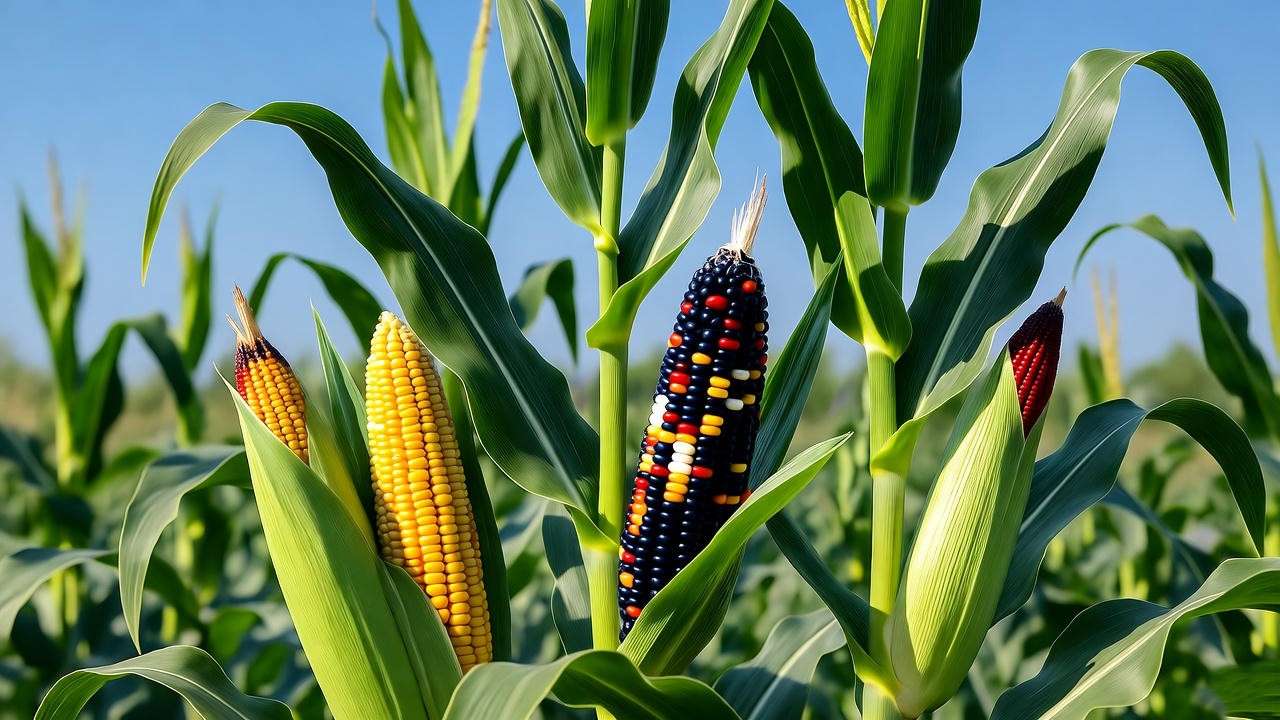
Sweet Corn Varieties
Sweet corn is the star of summer meals, known for its tender, sugary kernels. Varieties like ‘Sugar Buns’ (70 days) are early-maturing and perfect for small gardens, delivering compact ears with exceptional sweetness. ‘Ambrosia’ (75 days) offers bicolor kernels and disease resistance, ideal for organic gardeners. These varieties are classified by sugar content: standard (su), sugar-enhanced (se), or super-sweet (sh2). Super-sweet types, like ‘Honey Select,’ retain sweetness longer but require isolation from other corn types to prevent cross-pollination.
Dent and Flint Corn Varieties
Dent corn, named for the dent in its kernels, is used for cornmeal, tortillas, or animal feed. ‘Reid’s Yellow Dent’ (85-90 days) is a reliable heirloom with high yields. Flint corn, with its hard kernels, is ideal for popcorn or decorative uses. ‘Blue Hopi’ (100 days) produces striking blue ears, perfect for grinding or ornamental displays. These types are less common in home gardens but offer versatility for homesteaders.
Specialty and Heirloom Corn Seeds
Heirloom varieties like ‘Glass Gem’ captivate with their rainbow-colored kernels, making them a favorite for both beauty and seed-saving. ‘Oaxacan Green’ (90 days) carries cultural significance, used in traditional Mexican dishes. These varieties often require more attention to soil fertility and pest management but reward growers with unique flavors and stories. They’re perfect for gardeners passionate about preserving heritage crops.
GMO vs. Non-GMO Seeds
The GMO debate is significant for corn, a crop often genetically modified for pest resistance or herbicide tolerance. Non-GMO seeds, especially heirlooms, are preferred by organic gardeners for their natural genetics and sustainability. Look for certifications like USDA Organic or non-GMO labels when purchasing. Reputable suppliers like Seed Savers Exchange ensure non-GMO options, giving you peace of mind.
Visual Element: Below is a table comparing corn seed types:
| Type | Best For | Example Variety | Maturity (Days) | Key Traits |
| Sweet Corn | Fresh eating, canning | Sugar Buns | 70 | High sugar, tender kernels |
| Dent Corn | Cornmeal, feed | Reid’s Yellow Dent | 85-90 | High yield, starchy kernels |
| Flint Corn | Popcorn, decoration | Blue Hopi | 100 | Hard kernels, vibrant colors |
| Heirloom | Seed saving, unique flavors | Glass Gem | 90-100 | Diverse genetics, aesthetic appeal |
How to Choose the Best Corn Seeds for Your Garden 🌍
Selecting corn seeds for planting requires careful consideration of your environment and goals. Here’s how to make the right choice.
Assessing Your Climate and Growing Season
Corn thrives in warm climates with at least 60-100 frost-free days. Check your USDA hardiness zone to determine your growing season length. For northern regions (zones 3-5), choose early-maturing varieties like ‘Early Sunglow’ or ‘Northern Xtra Sweet’ (60-70 days). In warmer zones (6-9), you can opt for mid- or late-season varieties like ‘Silver Queen’ or ‘Stowell’s Evergreen’ (80-90 days). Use a planting calendar to time your sowing when soil temperatures reach 60°F (15°C).
Soil and Space Requirements
Corn prefers fertile, well-drained soil with a pH of 6.0-6.8. Test your soil and amend it with compost or nitrogen-rich fertilizer if needed. Corn is space-intensive, requiring rows or blocks for effective pollination. For small gardens, consider dwarf varieties like ‘Tom Thumb’ (popcorn, 85 days), which grow well in containers. Ensure at least 4-6 hours of direct sunlight daily.
Pest and Disease Resistance
Pests like corn earworms and diseases like smut can ruin crops. Varieties like ‘Ambrosia’ or ‘Bodacious’ offer natural resistance to common issues. Organic pest control methods, such as neem oil or introducing beneficial insects like ladybugs, can protect your plants without chemicals. Check seed packets for resistance traits (e.g., “resistant to Stewart’s wilt”).
Matching Seeds to Your Goals
Define your purpose: Are you growing for fresh eating, canning, or decoration? Sweet corn like ‘Kandy Korn’ is ideal for eating fresh, while ‘Oaxacan Green’ suits specialty dishes. For seed saving, choose heirlooms like ‘Country Gentleman.’ If aesthetics matter, ‘Glass Gem’ adds a stunning visual element. Aligning seeds with your goals ensures a rewarding harvest.
Tip Box: Checklist for Choosing Corn Seeds
- Check days to maturity against your growing season.
- Verify hybrid or heirloom status.
- Look for non-GMO or organic certifications.
- Ensure resistance to local pests/diseases.
Top 10 Corn Seed Varieties for 2025 🌟
To help you achieve a bountiful harvest, we’ve curated a list of the top 10 corn seed varieties for planting in 2025. These selections, based on performance, flavor, and adaptability, cater to diverse gardening needs. Each variety includes key details, pros, cons, and where to purchase, ensuring you can make an informed choice for your garden.
- Sugar Buns (Sweet, Hybrid, 70 Days)
- Description: An early-maturing, sugar-enhanced (se) sweet corn with 7-inch ears and golden kernels. Perfect for short-season climates.
- Pros: Exceptional sweetness, compact plants, disease-resistant.
- Cons: Requires isolation from other corn to prevent cross-pollination.
- Best For: Beginners and small gardens.
- Where to Buy: Burpee, Johnny’s Selected Seeds.
- Ambrosia (Sweet, Hybrid, 75 Days)
- Description: A bicolor sweet corn with creamy yellow and white kernels, known for its rich flavor and tenderness.
- Pros: Resistant to Stewart’s wilt, great for fresh eating or freezing.
- Cons: Moderate yield compared to other hybrids.
- Best For: Organic gardeners seeking reliable sweet corn.
- Where to Buy: Harris Seeds, Territorial Seed Company.
- Golden Bantam (Sweet, Heirloom, 80 Days)
- Description: A classic heirloom with golden kernels, introduced in 1902, offering old-fashioned sweetness.
- Pros: Open-pollinated for seed saving, rich flavor.
- Cons: Susceptible to pests, lower yields than hybrids.
- Best For: Heritage gardeners and seed savers.
- Where to Buy: Seed Savers Exchange, Baker Creek Heirloom Seeds.
- Reid’s Yellow Dent (Dent, Heirloom, 85-90 Days)
- Description: A productive heirloom dent corn used for cornmeal, grits, or livestock feed.
- Pros: High yields, drought-tolerant, versatile uses.
- Cons: Not ideal for fresh eating due to starchy kernels.
- Best For: Homesteaders and farmers.
- Where to Buy: Southern Exposure Seed Exchange.
- Blue Hopi (Flint, Heirloom, 100 Days)
- Description: A striking blue flint corn used for popcorn or grinding into flour, with cultural significance in Native American cuisine.
- Pros: Vibrant color, drought-resistant, unique flavor.
- Cons: Long growing season, requires fertile soil.
- Best For: Specialty growers and popcorn enthusiasts.
- Where to Buy: Native Seeds/SEARCH, Baker Creek.
- Honey Select (Sweet, Hybrid, 80 Days)
- Description: A super-sweet (sh2) variety with long-lasting sweetness and large, 8-inch ears.
- Pros: High sugar retention, excellent for canning.
- Cons: Needs isolation from other corn types.
- Best For: Gardeners prioritizing sweetness and storage.
- Where to Buy: Johnny’s Selected Seeds, Gurney’s.
- Glass Gem (Flint, Heirloom, 90-100 Days)
- Description: A visually stunning heirloom with rainbow-colored kernels, ideal for decoration or grinding.
- Pros: Unique aesthetics, open-pollinated.
- Cons: Lower yields, requires careful pollination.
- Best For: Ornamental gardens and seed savers.
- Where to Buy: Seed Savers Exchange, Baker Creek.
- Oaxacan Green (Dent, Heirloom, 90 Days)
- Description: A traditional Mexican dent corn with emerald-green kernels, used for tamales or tortillas.
- Pros: Cultural significance, rich flavor.
- Cons: Susceptible to pests, needs warm climates.
- Best For: Specialty cooks and heritage gardeners.
- Where to Buy: Native Seeds/SEARCH.
- Stowell’s Evergreen (Sweet, Heirloom, 90-100 Days)
- Description: A late-season sweet corn with white kernels, known for staying fresh longer after picking.
- Pros: Great for late harvests, seed-saving potential.
- Cons: Long maturity period, moderate pest resistance.
- Best For: Patient gardeners in warm climates.
- Where to Buy: Baker Creek, Seed Savers Exchange.
- Early Sunglow (Sweet, Hybrid, 60-65 Days)
- Description: An early-maturing sweet corn with golden kernels, ideal for cooler climates.
- Pros: Fast growth, cold-tolerant, beginner-friendly.
- Cons: Smaller ears, less sweet than super-sweet varieties.
- Best For: Northern gardeners with short seasons.
- Where to Buy: Burpee, Harris Seeds.
Visual Element: Include vibrant images of these corn varieties or a comparison chart highlighting maturity days, uses, and key traits.
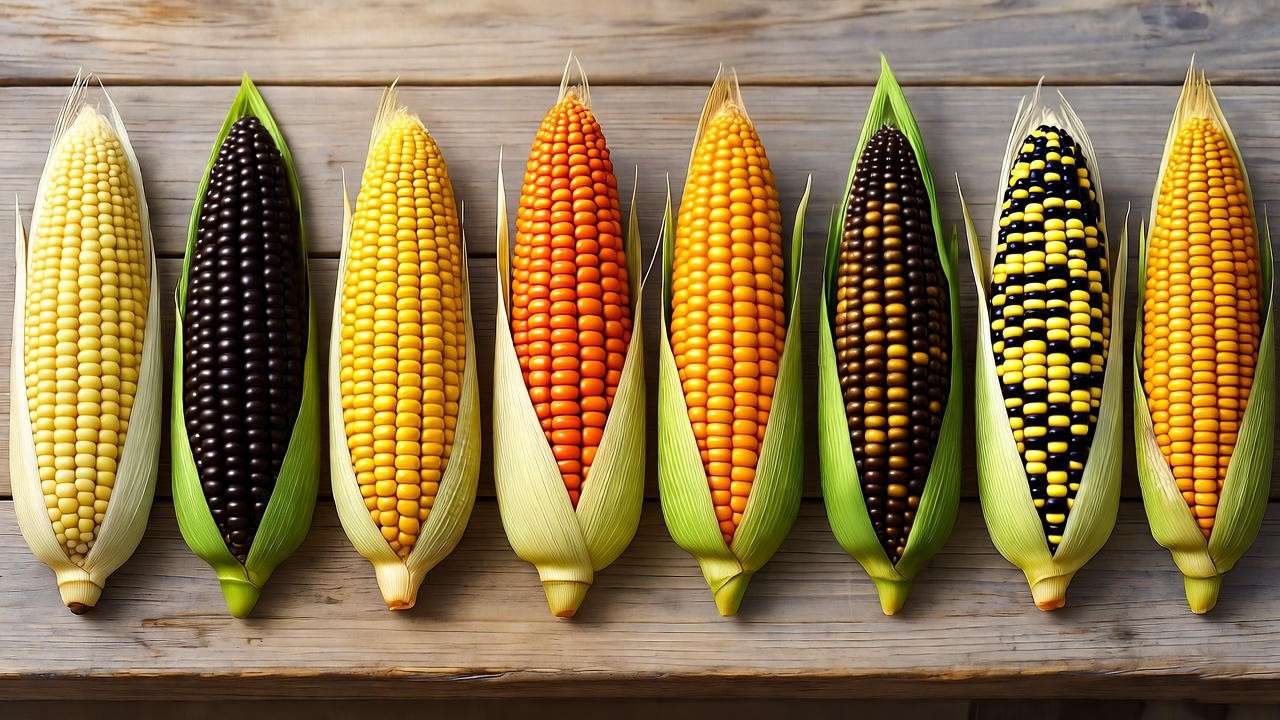
Planting and Growing Tips for Corn Success 🌿
Once you’ve chosen your corn seeds for planting, proper cultivation is key to a thriving crop. These expert-backed tips will guide you through the process.
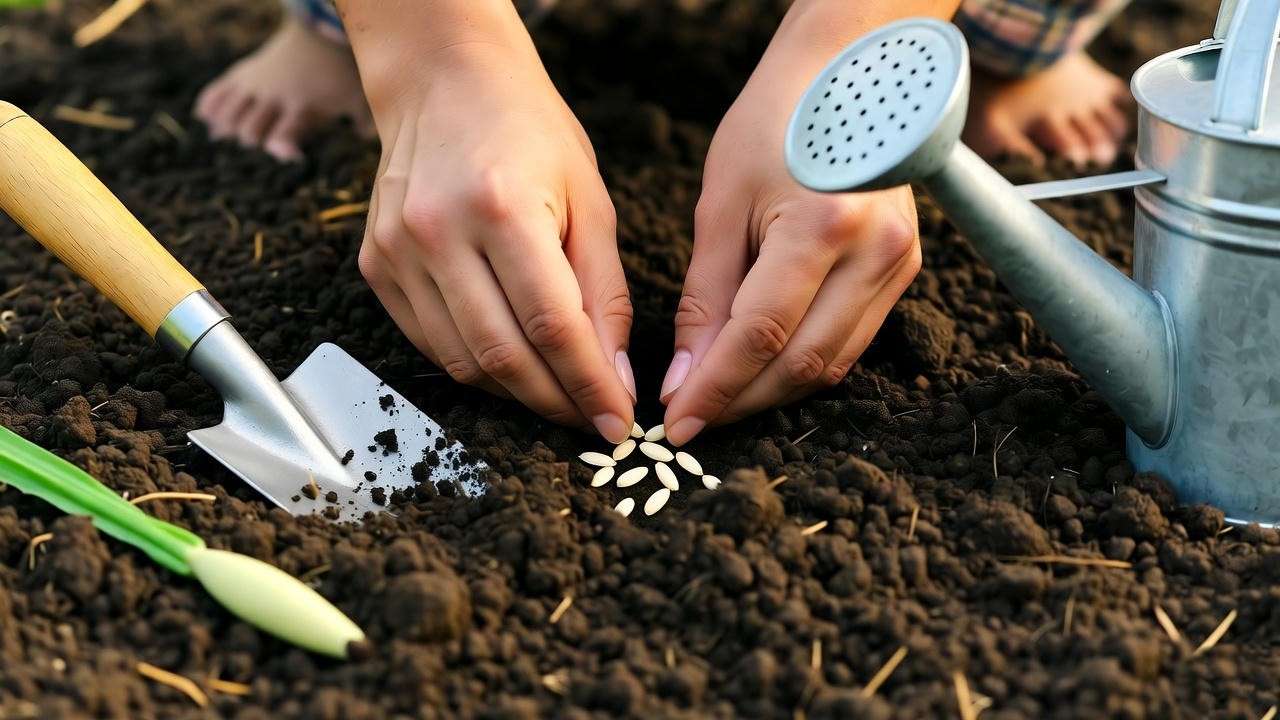
When and How to Plant Corn Seeds
Corn is a warm-season crop that needs soil temperatures of at least 60°F (15°C) to germinate. Plant seeds in spring, typically 2-3 weeks after your last frost date. Sow seeds 1-1.5 inches deep, 4-6 inches apart, in rows spaced 30-36 inches apart. For optimal pollination, plant in blocks of at least 4 rows rather than a single long row. This ensures pollen from the tassels reaches the silks effectively. Soak seeds overnight to boost germination rates, especially for heirlooms.
Watering and Fertilizing
Corn is a heavy feeder, requiring consistent moisture and nutrients. Water deeply (1-2 inches per week), avoiding waterlogging, as corn dislikes soggy roots. Mulch around plants to retain moisture. Apply a nitrogen-rich fertilizer (e.g., 10-10-10) at planting, then side-dress with additional nitrogen when plants are knee-high and again when tassels appear. Organic options like composted manure or fish emulsion work well for eco-conscious gardeners.
Pollination and Companion Planting
Corn relies on wind pollination, so block planting is critical to ensure silks receive pollen. Avoid planting different corn varieties too close together to prevent cross-pollination, which can affect kernel quality. For example, separate super-sweet corn from standard varieties by at least 100 feet. Companion planting can boost success—try the Three Sisters method, pairing corn with pole beans (which climb corn stalks) and squash (which suppresses weeds). These companions enhance soil fertility and deter pests naturally.
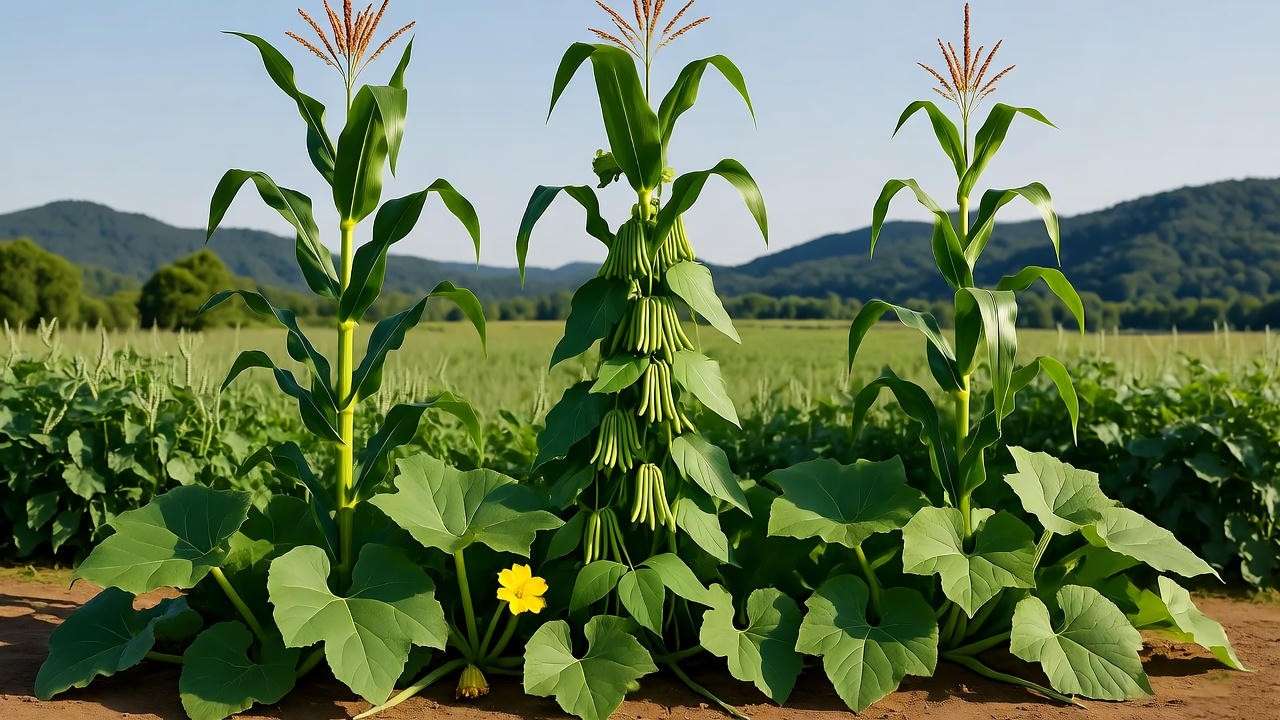
Common Challenges and Solutions
Corn faces challenges like poor germination, pests, and lodging (stalks falling over). To improve germination, ensure warm soil and avoid planting too early. Common pests include corn earworms (apply neem oil to silks) and raccoons (use fencing or motion-activated sprinklers). For diseases like smut, choose resistant varieties and remove affected ears promptly. To prevent lodging, hill soil around the base of plants when they’re 12-18 inches tall. Regular monitoring and organic solutions keep your crop healthy.
Expert Tip: “Pollination is the heartbeat of a corn crop,” says Maria Gonzalez, a veteran organic farmer. “Plant in blocks and check for tasseling to ensure every ear fills out properly.”
Where to Buy High-Quality Corn Seeds 🛒
Sourcing quality corn seeds is essential for success. Reputable suppliers like Seed Savers Exchange, Baker Creek Heirloom Seeds, and Johnny’s Selected Seeds offer non-GMO, organic, and heirloom options. Look for certifications like USDA Organic or non-GMO Project Verified on seed packets. Online retailers provide detailed variety descriptions, customer reviews, and growing tips, making them ideal for research. Local nurseries or farm supply stores may carry regionally adapted seeds, but always check for freshness and reputable brands. Avoid generic or unbranded seeds, as they may have lower germination rates.
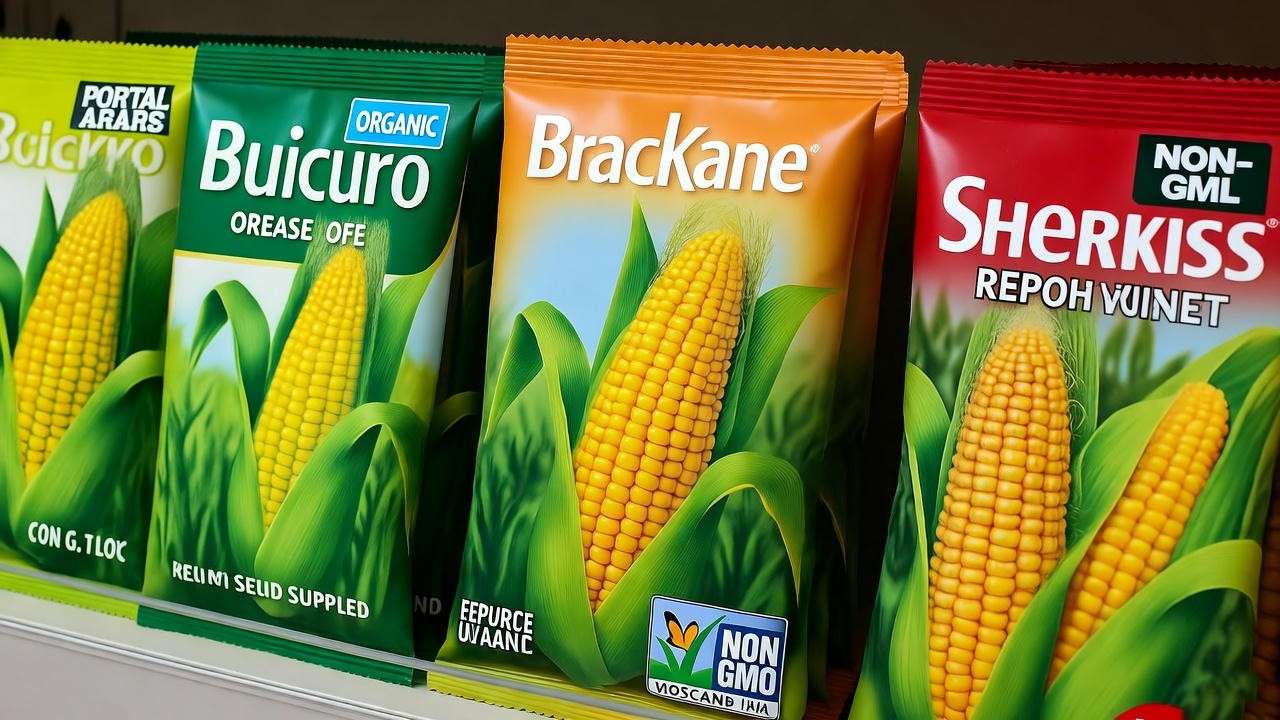
FAQs About Corn Seeds for Planting ❓
- What’s the best corn seed for beginners?
Early-maturing hybrids like ‘Early Sunglow’ or ‘Sugar Buns’ are forgiving and quick to grow. - Can I save corn seeds from my harvest?
Yes, with heirloom varieties like ‘Golden Bantam.’ Hybrids don’t breed true, so avoid saving their seeds. - How do I know if a seed is non-GMO?
Look for non-GMO or organic certifications on packets from trusted suppliers. - What’s the difference between early and late-season corn?
Early-season corn (60-70 days) suits cooler climates; late-season (80-100 days) offers larger ears but needs longer summers. - How many corn seeds should I plant?
Plant 10-12 seeds per person for fresh eating, adjusting for family size or storage needs.
Conclusion
Choosing the best corn seeds for planting is the first step toward a rewarding harvest of sweet, starchy, or colorful corn. By matching varieties like ‘Sugar Buns’ or ‘Glass Gem’ to your climate, soil, and goals, you can grow a crop that delights your table or garden. With expert tips on planting, pollination, and pest management, you’re equipped to succeed. Start planning your 2025 corn garden today, experiment with these top varieties, and share your results with fellow gardeners! 🌽

